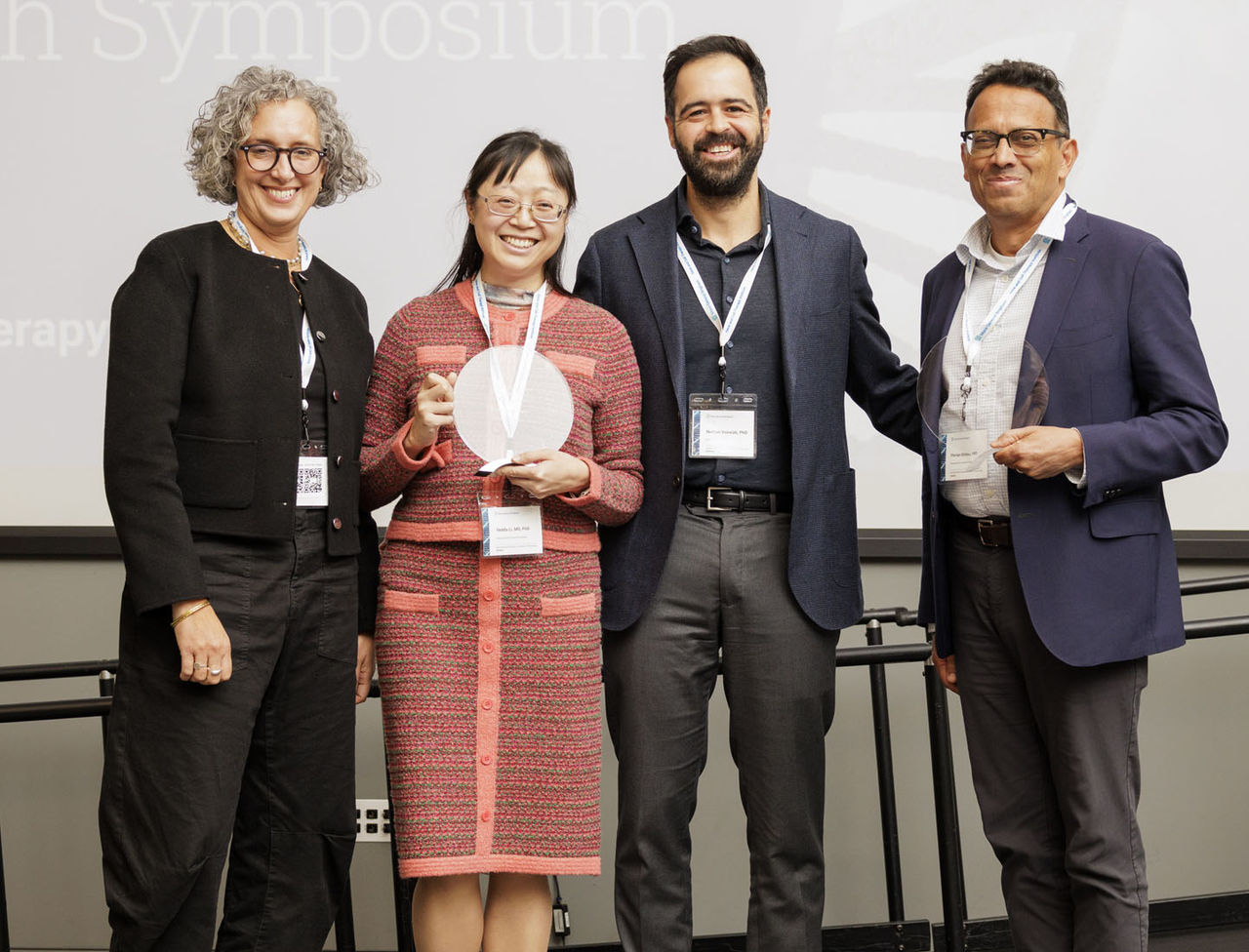Artur Indzhykulian, MD, PhD, Mass Eye and Ear
Evaluation of human miniPCDH15s in Human Inner Ear Organoids to treat USH1F
Usher syndrome type 1F (USH1F) causes deafness and blindness due to mutations in the protocadherin-15 gene (PCDH15). A simple gene addition therapy for USH1F remains challenging because the PCDH15 coding sequence is too large for adeno-associated virus (AAV) vectors. To overcome this limitation, the team developed “mini”-PCDH15 versions that fit into a single AAV capsid and can restore hearing and balance in mouse models of USH1F. Dr. Indzhykulian will test similarly designed human mini-PCDH15 versions to evaluate their function in human inner-ear organoids. This study will provide a proof-of-concept, preclinical evaluation of human mini-PCDH15s, an essential step for clinical translation.
Casey Maguire, PhD, Massachusetts General Hospital
AAV capsids which efficiently cross the blood brain barrier in primates
Two distinct, yet intertwined major problems are faced by adeno-associated virus (AAV) vectors for global treatment of diseases that affect the brain. First, the standard of care serotype for gene therapy to the CNS, AAV9, crosses the blood-brain barrier (BBB) at relatively low efficiency, so high doses are required for therapeutic benefit. AAV vectors (like other biologics) are costly and difficult to make to treat larger cohorts of patients. The second problem, which is linked to high doses of vector, is activation of the innate and adaptive immune system, which in some cases has led to clinical holds owing to sepsis-like symptoms and even organ failure and death. AAV peptide display libraries to discover novel capsids have been used successfully to achieve efficient transduction of murine CNS after systemic delivery. These proof-of-concept studies show promise that efficient AAV capsids may solve both issues above. The main issue that remains to be solved is obtaining “translationally relevant” AAV capsids that work in humans, as the capsids that have been selected in mice generally do not work in non-human primates (NHPs) and likely won’t work in humans to cross the BBB. The team’s solution is to perform a selection which results in identification of capsids with a high likelihood of crossing the BBB in humans and transducing target neurons.
Robert Manguso, PhD, Massachusetts General Hospital
Rapid identification of nanobody chimeric antigen receptors using nanomice
The team has developed a high-throughput method for generating nanobody-based chimeric antigen receptors (CAR) targeting any antigen. Dr. Manguso’s platform uses a novel strain of mice that produce single-domain (VHH) antibodies. Through immunization of these mice with dendritic cells expressing an antigen of interest, we can induce robust antigen-specific B-cell expansion. From there, the team directly isolates and clones VHH libraries from the immunized mice into CAR vectors and selects for highly functional and specific. This method has been applied to generate novel nanobody-CARs for mesothelin and is currently being used for the development of CARs targeting several additional antigens.
Ricardo Mouro Pinto, MSc, PhD, Massachusetts General Hospital
A "One-and-Done" CRISPR therapeutic for multiple repeat expansion diseases
The team is developing a novel CRISPR base editing therapeutic that specifically targets somatic repeat instability, which is a hallmark of disease in multiple repeat expansion disorders, including Huntington’s Disease, Friedreich Ataxia, Myotonic Dystrophy, X-Linked Dystonia Parkinsonism and multiple Spinocerebellar Ataxias. More specifically, we are targeting the DNA repair pathway to prevent pathogenic somatic expansion of disease-causing trinucleotide repeats. This therapeutic reagent would be delivered to disease vulnerable tissues as a single dose to effectively prevent disease onset or halt symptoms' progression.
William Renthal, MD, PhD, Brigham and Women’s Hospital
Nociceptor-specific gene therapy for chronic pain
The team is creating highly specific adeno-associated viruses (AAV) for long-term pain management. The therapy involves using a chemogenetic actuator, activated by an FDA-approved drug, to silence target nociceptors in patients who experience temporary relief from nerve blocks. To avoid anesthesia from off-target neuronal silencing, this approach will leverage gene regulatory elements the lab has identified to promote AAV expression specifically in nociceptors. This one-time therapy aims to provide patient-controlled local analgesia based on existing outpatient interventional nerve block procedures. Moreover, the general approach offers a platform for further development of cell-type and cell state-specific AAVs that may be applicable to other conditions.
Nicholas Todd, PhD, Brigham and Women’s Hospital
Focused ultrasound for delivery of AAV vectors across the BBB
The goal of this project to validate the use of focused ultrasound (FUS) blood-brain barrier (BBB) opening combined with systemic administration of a novel AAV capsid as a platform technology for delivering gene therapies to the brain. FUS can be applied to achieve non-invasive and temporary permeabilization of the BBB in targeted brain regions, allowing normally non-penetrant therapies to reach the brain from systemic circulation. Preliminary data in mice indicates that particularly potent neuronal transfection can be achieved when FUS- BBB opening is combined with a novel AAV capsid, AAV.CPP, engineered for improved penetrance across the BBB. The team will characterize delivery efficacy relative to the current state of the art and demonstrate proof-of-concept gene knock-down/replacement in two clinically relevant diseases. It is anticipated that data from these studies will showcase FUS-BBB opening + AAV.CPP as a leading platform technology for delivering gene therapies to the brain, allowing for several paths to further develop and translate this exciting technology.
